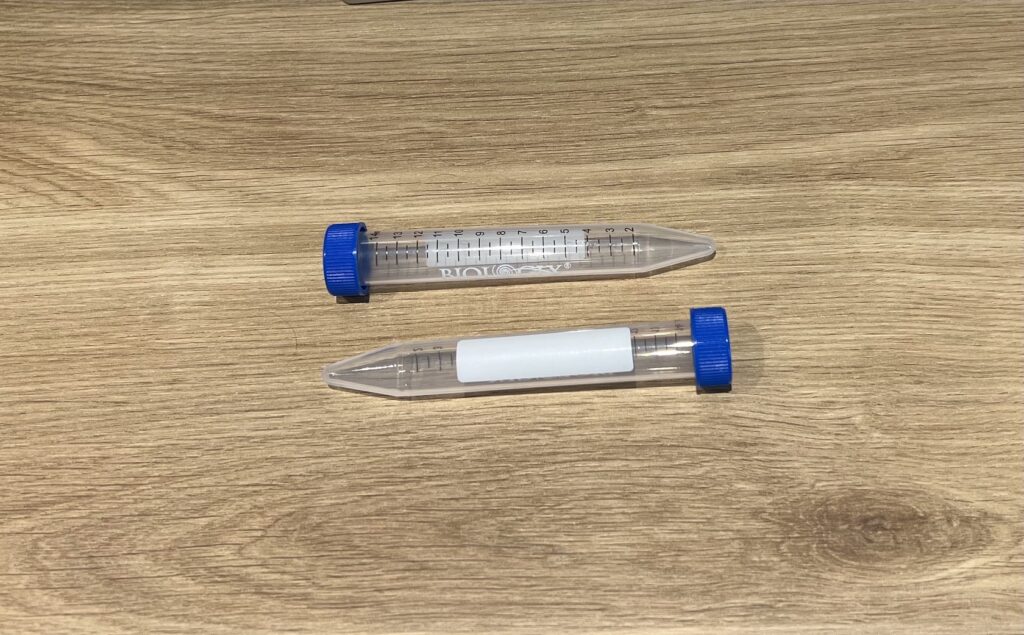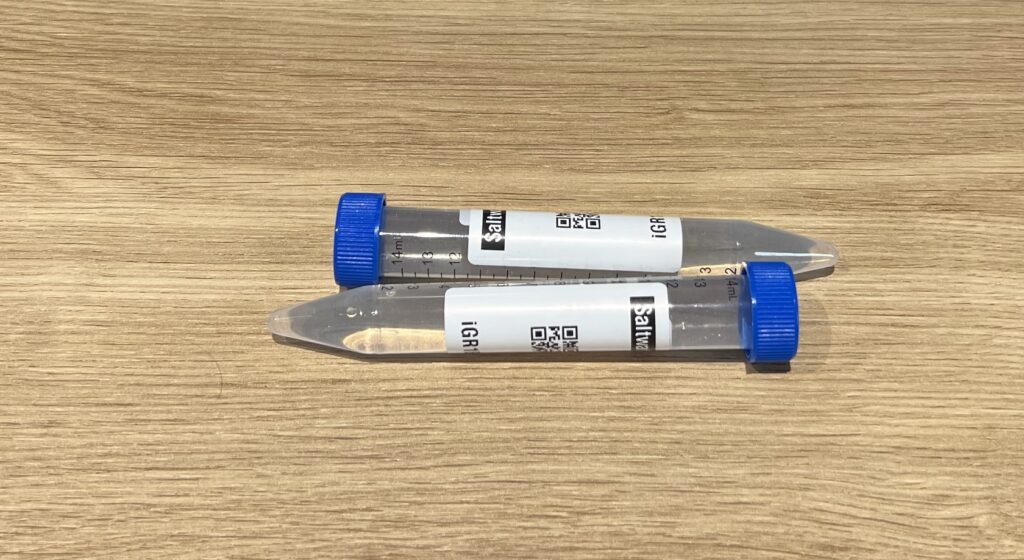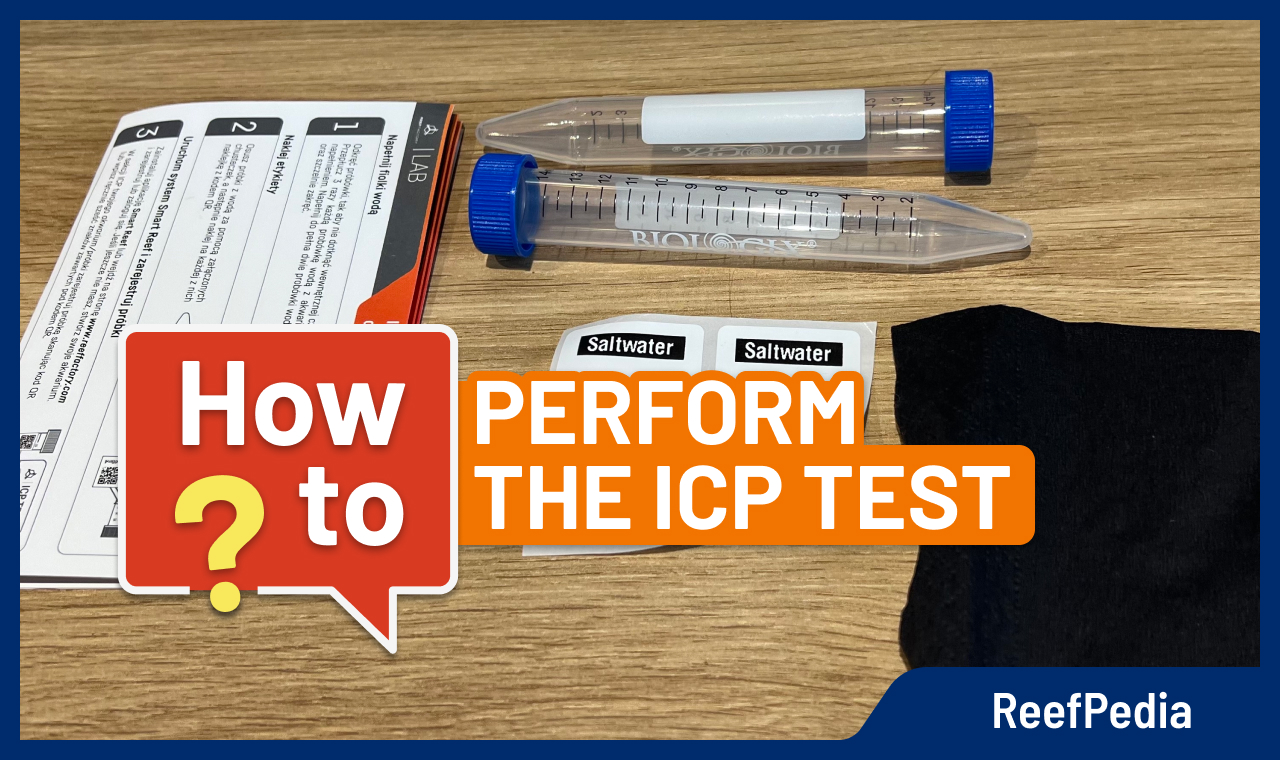The ICP (Inductively Coupled Plasma) test is an extremely important tool for marine aquarists who want to keep the animals in their aquarium in the top condition. This test allows the chemical composition of the aquarium water to be examined accurately, allowing any problems to be detected quickly and appropriate action to be taken.
In this instructional article, we will show you step-by-step how to perform an ICP test properly in a marine aquarium.
Step 1: Water sample preparation
The water sample you want to test should be taken from the aquarium in the correct way. From the kit received from the ICP test supplier, we choose the two vials that we will use to send the water for testing.

We open the vials and scoop the water from the aquarium. We scoop and pour the water 3 times so that the vial is rinsed out. One last time we scoop the water to the level that is marked on the vial.
At this point it is worth mentioning that it is advisable to do a water test before changing the water in the aquarium. While collecting water from the tank, be careful and do not collect any biological matter such as food leftovers or fish excrement. It is also worth remembering not to take in the water immediately after when any food, amino acids or other ingredients was added to the water because that may contaminate the water.
Once we have the water vials filled and properly capped, it is time to label them. In the ICP test kit, we have stickers that we affix to the vials.

In the next step, we register the vial number with the supplier in the app. In the app, we click add ICP analyze, then enter the sample number and confirm. If there is a note option, you can add a note (for example, the date the water was taken and a note that it was taken before the water change).
After the registration, we put the vials in a bubble envelope, seal it. We fill in the shipping label and stick it in the appropriate place on the envelope.
The water is prepared for shipping.
Step 2: Shipping the sample to the laboratory
The prepared water sample needs to be sent to the laboratory. In order to deliver the water quickly and safely, we choose a supplier that allows us to monitor the process of shipment. We will avoid the situation that our shipment is missing and it is not easy to determine what happened to it. Shipping by a courier will be a sensible choice.
Once the parcel is posted, we write down the tracking number.
Step 3: Testing
Once the laboratory has received the sample, a test will be performed. On average, water testing companies perform the test in 24-72 hours, where in most cases the time is less than 24 hours. The time is calculated from the time of delivery in the morning. If the consignment was delivered at midday or in the afternoon, the time is counted from the next morning.
Step 4: Analysis of results
Once the laboratory has performed the test, the customer receives a push notification on the phone or by email depending on the service provider. The results need to be analyzed carefully. The results of the ICP test should include information on the content of various elements in the water, such as calcium, magnesium, potassium, phosphorus and many others. You should compare the results with the recommended levels of these elements in the marine aquarium to determine if there are any abnormalities.
Step 5: Take action
If the ICP test results indicate any abnormalities, take appropriate action to restore the aquarium’s chemical element levels. For example, if the results indicate too low levels of calcium or magnesium, add the appropriate calcium or magnesium liquid to the water. If there are any overdoses or defilement of the water then appropriate corrective action should be taken. Each laboratory recommends its clients what to do in a specific situation.
About the author

Marek Protasewicz
Reefkeeping has been my passion for over 10 years now. I love learning. The hobby has taught me many valuable lessons, patience being the best example.
Combining work and passion is my path. I run Crazy Coral, a marine aquarium shop, for a number of years. Building this business from the scratch I learnt from my own mistakes at a heavy cost.
Later I managed a project aimed at development of methods for quick growth of Corals in non-natural conditions. The project was carried out by Get Sales, Poland.
Presently, I am responsible for distribution strategy at Reef Factory, of which I am a
co-founder. The company produces smart devices for marine aquaristics.
The last projects I have been involved in are Social Reef and ReefPedia.



